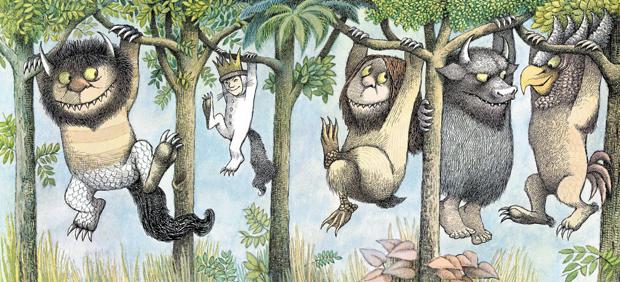Meeting Maurice: Remembering Sendak
Published May 16, 2012
As soon as I entered I was met by the dog. Then we sat down in the small living room and had tea. I can’t remember the dog’s name, but it was a large shepherd with huge expressive eyes. He sat by us every moment, like an esteemed visitor from the old country. He never barked, but I imagined if he did, his bark would be heavily accented in Yiddish.
After tea, Maurice immediately proposed we take a walk in the lovely wooded area surrounding his modest home in Westport, Conn. The dog was delighted to be outside, and limped along slowly at his master’s side.
ADVERTISEMENT
Maurice walked with a cane, and I remember feeling the same things I did with my grandfather for lunch in New York City. We’d meet for lunch at Schrafft’s inside the Empire State Building (where he still kept an office even in his 80s), and the whole time I was eating my tuna fish sandwich on white toast with its elegant garnish of celery and olives, I worried about how I would be able to find a cab for him on 6th Avenue. Grandpa could barely see after cataract surgery, and he wore those thick sunglasses old people sometimes wear. He was so small and frail, and the only thing standing between him and a car running into him or a gang of thieves was his teenage grandson.
I was afraid that Maurice would trip over a branch, and I would have to figure out how to call for help. For some reason, I had dressed in a suit and tie, assuming we would be meeting indoors, and I felt terribly self-conscious about being young and tall and about not having to walk with a limp or a cane.
Maurice was extremely warm and friendly, but when we turned to other topics it became apparent that this was because I had his trust. Normally, it was him against the rest of the world, which was full of anti-Semite pigs and vulgar philistines. Hitler was the norm, not the exception. And what happened in Europe could just as easily happen again here, and probably would.
When we met, everyone was talking about the success of “Schindler’s List,” and he spoke with utter contempt of Spielberg’s commercialization of the Holocaust. It was unforgivable, he said. Later, we discussed his own work and celebrity, and how miraculously it had all come about.
ADVERTISEMENT
He never wrote for children, he said. In fact he didn’t much like them. Or anyone else. His friends were books, and the great artists of the past: Mozart and Melville and Shakespeare. In his art, he was just depicting his world as he knew it. The monsters and rather nasty adults who peopled the world of his books and drawings were simply portraits of his own parents and relatives in Brooklyn.
His one great contribution, he said, was to realize that the world of childhood is full of cruelty, fear and treachery. It’s all there at the heart of every child, only adults chose to ignore it in favor of a romanticized dream. In reality, it was a jungle, a nightmarish phantasmagoria of fears and insecurities rather than a sentimentalized fairytale.
He had just finished a new book, “We’re All in the Dumps,” about a homeless child, which would dismay many of his fans, he said. Max, in “Where the Wild Things Are,” was merely someone who managed to brave the rough seas of monsters and creatures that threaten to devour each of us. Instead of growing out of this condition as adults normally do, he said, he had maintained and even cultivated his status as a perpetual, surly outsider.
It was there in Pierre (named after the eponymous character in Melville’s novel) who says “I don’t care” to everyone, and likewise present in the fierce independence of Rosie. Being homosexual and not having a family of his own had allowed him to retain what most other people had lost: the status of the perpetual outsider. It was there in his art, which covered the walls in his study with its enormous drafting table.
When we returned back home, he fed the dog. This was not merely the highlight of the animal’s day, it was a celebration for Maurice. He measured out the dog food like a scientist conducting a lab experiment, and even mimed chewing as the dog chewed and swallowed. For a moment the casual grumpiness was gone, and he flashed a smile.
It was the smile of a man who did not do this often. But it was utterly genuine and expressed true love for a kindred spirit, isolated and alone. It was the only time I saw him smile, but it remains with me to this day.
Maurice Sendak died May 8 of complications following a stroke.
















